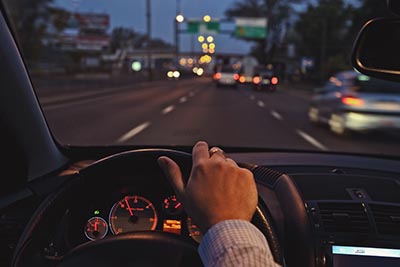
While many people enjoy the extra hour of sleep when we turn clocks back this Sunday, there are also potential challenges for drivers as they adjust to the time change.
AAA Mid-Atlantic and the Virginia Department of Transportation are reminding drivers to be prepared as changes in sleep patterns may increase chances of drowsy driving and accidents due to seasonal sun glare.
“While many will enjoy an extra hour of sleep this weekend, few commuters and motorists realize the added dangers that can come as the result of a time change – especially when they are behind the wheel,” said Morgan Dean, AAA Mid-Atlantic public affairs manager. “Although we gain an hour of sleep, our sleep patterns are disrupted. This can result in drowsy driving episodes, and it is unsafe to drive when we are feeling sleepy.”
Blinding sun glare
After the time changes from Daylight Saving to Standard Time, the sunrise and sunset hours more closely align with morning and evening commuting hours, which means large numbers of drivers will encounter the sun low on the horizon during their morning and evening drives. In some locations the sun appears to hover just above the roadway, creating blinding glare that is difficult to avoid and can leave drivers unable to see the road and other vehicles around them.
In past years, this seasonal sun glare has been determined to be a contributing factor in some vehicle crashes, particularly on interstate and primary highways. The effect is most acute beginning in mid-late October through the winter months because sunrise and sunset so closely correlates with peak commuting hours, according to a news release from VDOT.
Drowsy driving
AAA Foundation for Traffic Safety’s 2020 Traffic Safety Culture Index data shows that most motorists (95 percent) identify drowsy driving as very or extremely dangerous. Despite high rates of perceived danger and personal/social disapproval regarding drowsy driving, about 17 percent of drivers admit to having driven while being so tired that they had a hard time keeping their eyes open, at least once in the past 30 days.
Previous research by the AAA Foundation estimates that drowsy driving is a factor in an average of 328,000 crashes annually, including 109,000 crashes that result in injuries and 6,400 fatal crashes.
“The end of Daylight Saving time this weekend will bring shorter days and longer nights,” said Dean. “Night driving brings challenges, so we urge motorists to slow down, increase their following distance, use headlights to make yourself more visible, and be extra cautious on our roadways.”
Symptoms of drowsy driving may include having trouble keeping eyes open, drifting from lanes or not remembering the last few miles driven. However, more than half of drivers involved in fatigue-related crashes experienced no symptoms before falling asleep behind the wheel.
Be cautious of deer, other animals
Motorists are also urged by AAA to be more cautious of deer sightings and crashes. November and December are among the most dangerous months of the year for motor vehicle collisions with animals. A collision with a deer or other animal can put a serious dent in your vehicle, if not destroy it completely, and could result in serious injuries or fatalities.
VDOT tips for drivers
- Be aware of sunrise and sunset times
- Consider adjusting your drive time; just a few minutes earlier or later will change the sun’s position relative to the roadway
- Reduce speed when approaching an area where the sun hovers above the pavement
- Be aware of the location of vehicles around you
- Allow extra distance between your vehicle and others to reduce the risk of collisions
- Do not swerve, slow or stop suddenly; other drivers behind you may not be able to slow or stop.
AAA tips for drivers
- Slow down
- Turn on your headlights to become more visible during early morning and evening hours
- Keep vehicle headlights and windows (inside and out) clean
- Do not use high beams when other cars or pedestrians are around
- Yield the right of way to pedestrians in crosswalks and do not pass vehicles stopped at crosswalks
AAA tips for pedestrians and bicyclists
- Cross only at intersections. Look left, right and left again and only cross when it is clear. Do not jaywalk.
- Avoid walking in traffic where there are no sidewalks or crosswalks. If you have to walk on a road that does not have sidewalks, walk facing traffic.
- Evaluate the distance and speed of oncoming traffic before you step out into the street.
- Wear bright colors or reflective clothing if you are walking or biking near traffic at night. Carry a flashlight when walking in the dark.
- Avoid distracted walking. This includes looking at your phone or listening to music. If you must listen to music, make sure it is at a low volume so you can hear danger approaching.
- Bicycle lights are a ‘must have’ item for safe night riding, especially during the winter months when it gets dark earlier.
AAA advocates for the safety and mobility of its members and has been committed to outstanding road service for more than 100 years. For more information, visit www.AAA.com.
Related story
Expert: Daylight saving time may lead to driver fatigue, hazards on the road










